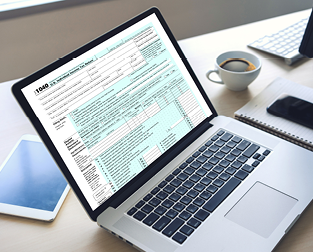1 Consult your tax advisor, as there are phase-out ranges for IRA contribution deductibility based on modified adjusted gross income (MAGI) ranges that are published annually and correspond to your federal tax filing status (married, filing jointly; married, filing separately; or single) and whether you or your spouse participate in an employer-sponsored retirement plan.
2 Investor.gov, Compound Interest Calculator, accessed March 2025.
3 The taxable portion of your withdrawal that is eligible for rollover into an individual retirement account (IRA) or another employer's retirement plan is subject to 20% mandatory federal income tax withholding, unless it is directly rolled over to an IRA or another employer plan. If you have not reached age 59½, the taxable portion of your withdrawal is also subject to a 10% additional tax, unless you qualify for an exception. Be sure you understand the tax consequences and your plan's rules for distributions before you initiate a withdrawal. Please note: You should consult your financial and tax advisors with specific questions about your personal situation if you are considering a withdrawal from your plan account.
4 For a distribution from a Roth IRA to be federally tax-free, it must be qualified. A qualified distribution from your Roth IRA may be made after a five-year waiting period has been satisfied (this period begins January 1 of the tax year of the first contribution or the year of conversion, if earlier, to any Roth IRA) and you (i) are age 59½ or older, (ii) are disabled, or (iii) qualify for a special purpose distribution such as the purchase of a first home (lifetime limit of $10,000). In situations where the original account owner is deceased and the five-year waiting period has been satisfied, distributions to the beneficiary are also considered a qualified distribution. If you take a non-qualified distribution of your Roth IRA contributions, any Roth IRA investment returns are subject to regular income taxes plus a possible 10% additional tax if withdrawn before age 59½ unless an exception applies. A special additional income tax provision applies for converted assets that are not withdrawn in a qualified distribution. If a non-qualified withdrawal is made within five years of the conversion, the earnings withdrawn will be subject to income tax, and the entire withdrawal may be subject to an additional tax unless an exception applies as applicable for conversions. Consult your tax advisor for details.
5 Social Security Administration, “When to Start Receiving Retirement Benefits,” May 2024.
6 Peterson-KFF Health System Tracker, “How do health expenditures vary across the population?,” January 2024.
7 Medicare.gov, “Avoid late enrollment penalties,” accessed February 2025.
8 Social Security Administration, “What is the average monthly benefit for a retired worker?,” January 2, 2025.
9 Urban Institute, “Social Security and Medicare Benefits and Taxes: 2023,” July 2023.
10 The required beginning date for RMDs is April 1 of the year after you turn age 73 (age 75 if you turn age 74 on or after January 1, 2033). You are required to take an RMD by December 31 each year after that. If you delay your first RMD until April 1 in the year after you turn age 73, you will be required to take two distributions in that year. Failure to take all or part of an RMD results in a 25% additional tax (or 10%, depending on how quickly you take the missed distributions) applicable to the amount of the RMD not withdrawn. Consult your tax advisor for more information on your personal circumstances.
11 Effective January 1, 2024, the SECURE 2.0 Act has eliminated RMDs for designated Roth accounts in employer-sponsored retirement plans during the lifetime of the owner.
Merrill, its affiliates, and financial advisors do not provide legal, tax, or accounting advice. You should consult your legal and/or tax advisors before making any financial decisions.
Bank of America is a marketing name for the Retirement Services business of Bank of America Corporation.
This material should be regarded as educational information on Healthcare and Social Security considerations and is not intended to provide specific Healthcare and Social Security advice. If you have questions regarding your particular situation, please contact your legal or tax advisor.


















